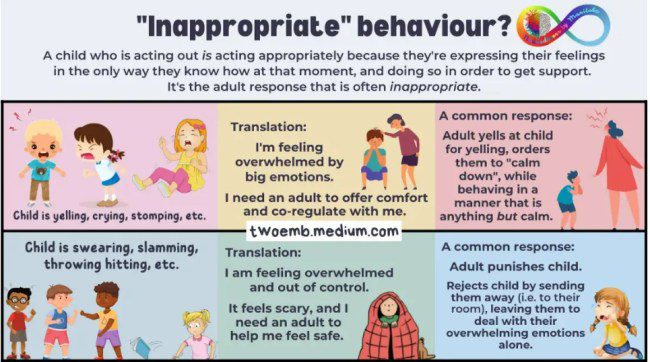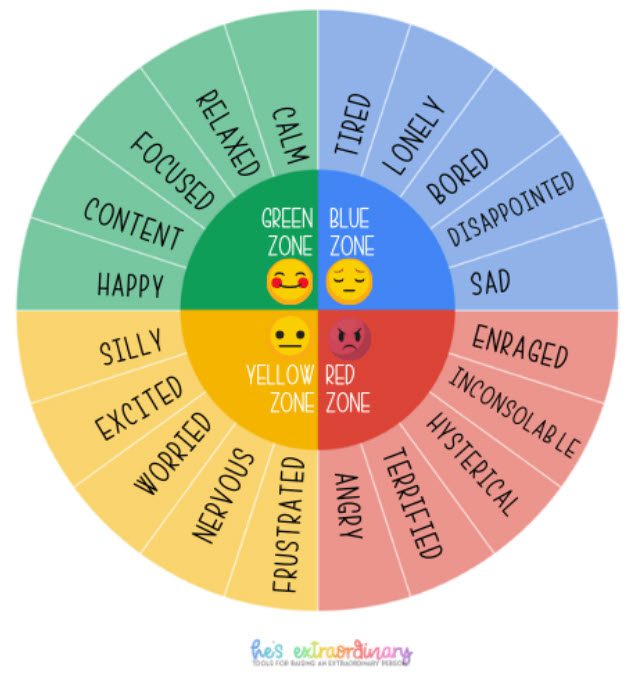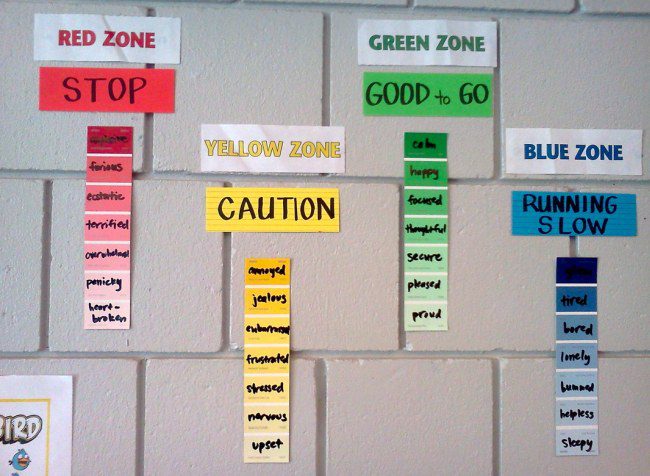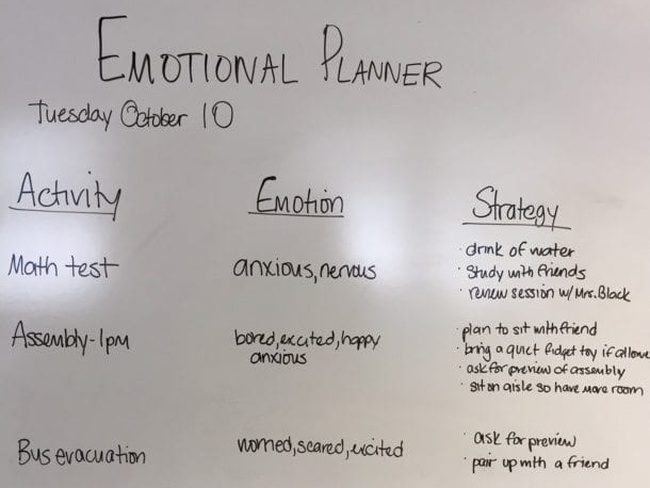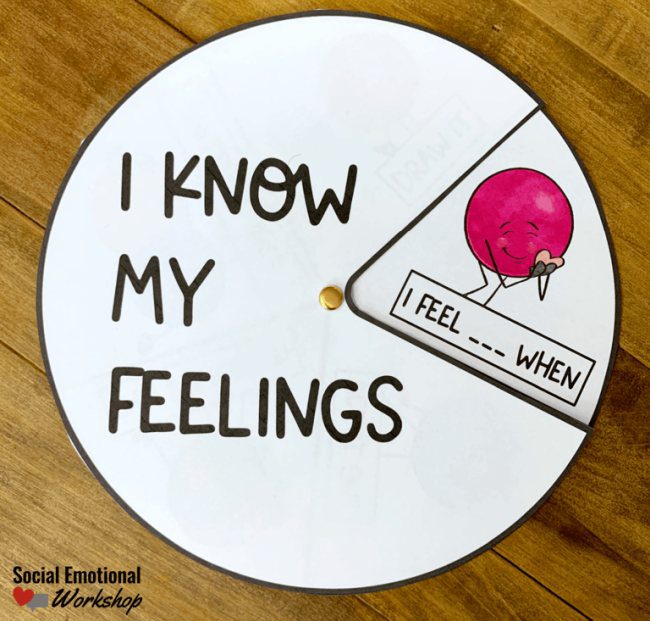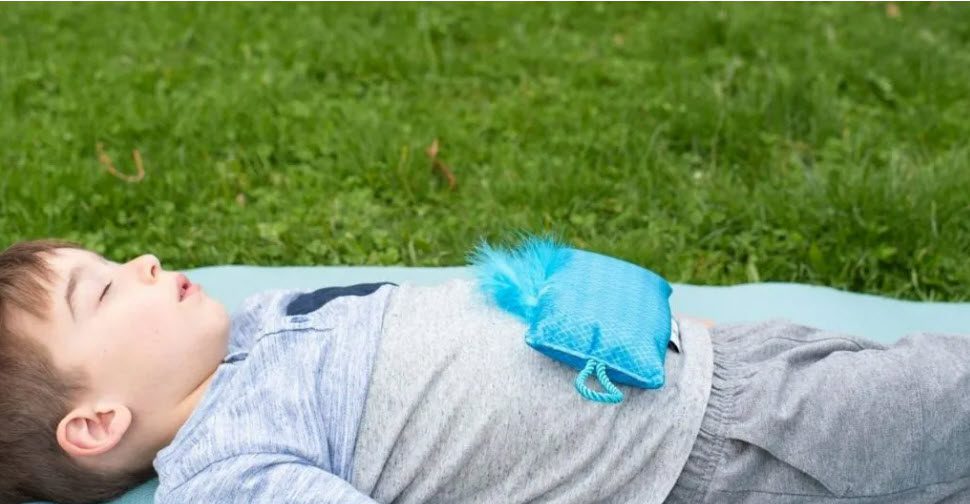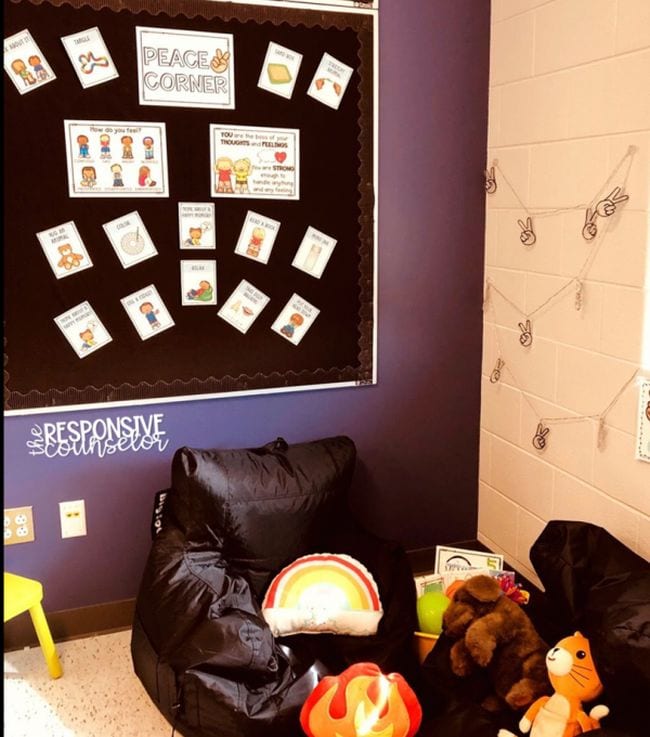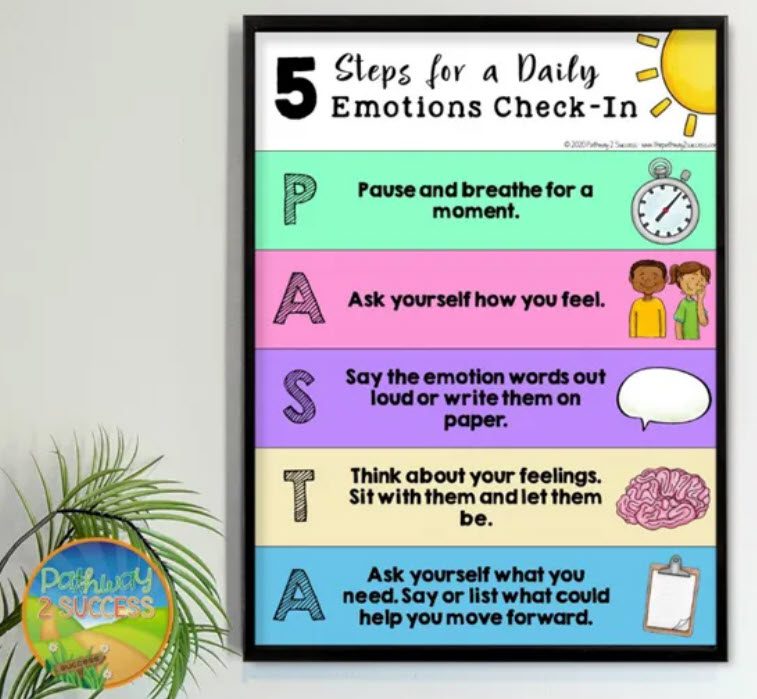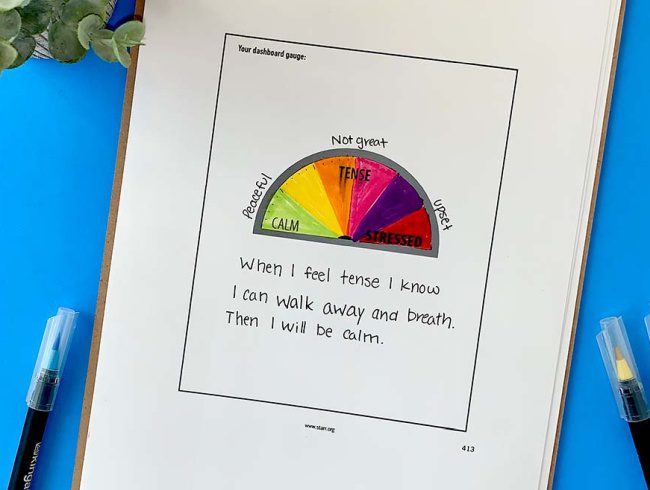Lee is having a tough day. The fourth grader found out recently that his parents are getting divorced, and he can’t stop thinking about it. He slipped and fell in the mud during recess, and his pants and shoes are uncomfortably wet. Now he’s trying to concentrate on his spelling test, but the student next to him keeps tapping their pencil on the table. Suddenly Lee jumps up, grabs the pencil and breaks it in half, then yells, “Shut up! Shut up! Shut up!” His teacher is tempted to punish him but realizes what Lee really needs is help with emotional regulation.
What is emotional regulation?
Source: Jillian Enright on Medium.com
According to Psychology Today, emotional regulation is the ability to control your emotions and not let them drive your actions. This is not a skill that comes easily to most of us, so it’s important to help kids learn how to regulate and give them opportunities to practice.
“Emotional regulation takes place deep inside the emotional center of your brain,” explains Lori Jackson, school psychologist. “When it’s working, you can go smoothly from one event to another, managing the different emotions that arise. When you can’t manage your emotions, each event or activity can bring difficulties and challenges. That’s called emotional dysregulation.”
Controlling emotion can be automatic, or it can require conscious effort. As we become more skilled at emotional regulation, our automatic responses are more likely to kick in. In Lee’s place, most adults wouldn’t break their peer’s pencil out of frustration; instead, they’d either ignore the tapping or calmly ask the person to stop. But that’s a learned behavior, and not an easy one.
How do we regulate emotions?
Psychologists break emotional regulation into three broad categories: suppression, reappraisal, and acceptance. When you suppress emotions, you push them down, refusing to acknowledge or act on them. This can be helpful in the short term (if Lee suppressed his anger, he wouldn’t have broken the pencil or yelled), but it doesn’t actually help you deal with the emotion. It’s all still there under the surface, waiting to bubble up again.
Reappraisal is about reframing the situation in your mind, allowing you to deal with it calmly and rationally. We can teach kids reappraisal skills in a variety of ways, like mindfulness techniques. We can also urge them to simply accept their emotions, acknowledging them as valid, but not letting them control their actions.
As adults, we know these skills don’t come easily. But that’s all the more reason to focus on teaching them. “For kids, dysregulation makes life challenging, friendships difficult, and most significantly, it can make learning impossible,” warns Jackson. To curb that, we need to teach emotional regulation so kids can realize that they’re in control of their feelings and subsequent actions. Here’s how to make those skills a staple in your classroom.
1. Learn to name emotions and connect them to behavior
Source: Mosswood Connections
Talk to students about different emotions, and how those emotions can cause us to act. For instance, many kids will realize that they cry when they’re sad. But not everyone cries; some people get very quiet or even show anger instead. Start with simple emotions, and ask students to name situations where they might feel those emotions. Then, ask them how they behave when they feel a certain way. It’s OK if some students have different answers than others. The point is for them to make connections about their own thinking and behaviors.
Try it: Go on an emotions scavenger hunt! Give kids a checklist of emotions. Then, watch a video or read a story, and ask kids to check off each emotion as they see it. Make sure they explain how they identified the emotion. For instance, if a character gives someone a hug, they might say that shows love. Get the free scavenger hunt activity at Mosswood Connections.
2. Explore the Zones of Regulation
Source: He’s Extraordinary
Zones of Regulation, a curriculum developed by Leah Kuypers, an OT and autism resource specialist, helps kids understand and learn to manage their emotions. Rooted in cognitive behavioral therapy, it’s a framework that uses four colors—blue, green, yellow, and red—to help students identify their feelings and regulate emotion. Teaching students how to read their bodies’ signals, detect triggers, read social context, and consider how their behaviors impact those around them leads to improved emotional control, sensory regulation, self-awareness, and problem-solving skills.
Try it: We’ve rounded up 18 terrific Zones of Regulation activities to try, including sorting and matching games, behavior bingo, songs, task cards, and more. Find them all here.
3. Practice using your words
Source: School Counseling Files
Build your students’ emotional vocabulary by giving them direct access to those words and feelings. Lauren Ross, LCSW and school social worker for the Cherry Creek School District in Denver, Colorado, suggests creating a word wall filled with feelings words. Then, when kids are demonstrating negative behaviors, ask them to look at the wall and choose the words to describe how they’re feeling. This helps them connect those actions and emotions, and consider what coping strategies they can try.
Try it: This paint strip word wall is especially clever, since it ties into the Zones of Regulation. If you don’t want to use paint strips, try colored paper instead. Learn more at The School Counseling Files.
4. Think about emotions in advance
Begin the school day by asking your students about things that might be bothering them. “Ask your students about their homework or what they ate for breakfast. Ask if anyone fought with their brother or sister,” suggests Lori Jackson, who created an emotional regulation curriculum called The Connections Model. “The idea is to discuss any event that likely elicited a feeling and have everyone share. This sets the tone for the day, giving you the heads up on who might have a tough day and why.”
Try it: Start the day with an Emotional Planner. Consider upcoming events and how students are feeling about them. This gives kids the chance to think about their emotions in advance of an event, like a quiz or field trip, and plan how to manage those emotions using smart strategies. This could be a class discussion or a journaling exercise.
5. Share and model your own emotions
Source: Social Emotional Workshop
Don’t be afraid to share your own emotions as they occur throughout the day. You’re not superhuman, so of course a stressful day when the printer jams, your students have asked the same question 15 different ways, and you forgot about a mandatory faculty meeting after school will rattle you. Share your feelings with your students—it’s a surefire way to help them understand the connection between feelings and behavior.
Try it: Demonstrate and name your own feelings with an emotion spinner. Name how you feel, and what’s causing it. If the feelings are strong, explain the techniques you’re using to keep your emotions from controlling your behavior. Get your free printable spinner from Social Emotional Workshop.
6. Teach mindfulness strategies
According to Mindfulness.org, mindfulness is “the basic human ability to be fully present, aware of where we are and what we’re doing, and not overly reactive or overwhelmed by what’s going on around us.” There are dozens of mindfulness strategies, from meditation and deep breathing to journaling and drawing. As kids learn a strategy that’s useful to them, they can add it to their own emotional regulation toolkit.
Try it: We’ve put together a list of 50 simple mindfulness activities you can use from grades pre-K to 12. Shake a glitter jar, blow bubbles, learn belly breathing, try guided imagery, and so much more. Find all these and more here.
7. Create and use a calm-down corner
Source: The Responsive Counselor
Set aside a dedicated space in your classroom where kids can go to practice their emotional regulation skills. A calm-down corner, sometimes known as a peace corner or even Antarctica (a place far away from everyone else), gives kids a place to recenter and refocus so they can join the learning again.
Try: A good calm-down corner is safe and cozy, separated from the classroom by a divider of some kind. It provides helpful tools, like emotion charts, fidget toys, social-emotional books, and more. Consider providing headphones so students can listen to calming music or complete a short guided meditation. Learn how to create your own calm-down corner here.
8. Use apps to manage emotions
Source: Calm Kids
Mindfulness and emotional regulation apps can be really helpful for students. They provide in-the-moment coping strategies and feedback, and can help kids track the situations that cause them stress. Calm.com, a popular app, offers a free version for schools, but there are lots of excellent options available.
Try it: Install a mindfulness app on classroom iPads, or allow students to use their phones for a few minutes if they need to access an app that helps them calm their emotions. Show students how to use these apps, and monitor their use to ensure kids don’t get distracted by other online activities. Find a list of great mindfulness apps for kids and adults here.
9. Do regular emotional check-ins
Source: Pathway 2 Success
Build time into your schedule throughout the day (even just a couple of minutes at a time) for kids to connect with their feelings. They might be surprised to find that their bodies are tensed because they’re stressed, or that they are having trouble paying attention because they’re thinking too much about something that’s happening at home. A brief check-in refocuses their attention and reminds them to live in the moment.
Try it: The PASTA emotional check-in is quick and easy. Pause and breathe. Ask yourself how you feel. Say the emotion words out loud or write them down. Think about your feelings, and just let them be. Ask yourself what you need. Learn more about the PASTA method and other emotional check-ins from Pathway 2 Success.
10. Build emotional resilience
Emotional resilience is a person’s ability to “bounce back” after setbacks—to learn from past failures and be willing to try again. It’s a key part of emotional regulation. Once kids recognize and manage their emotions, they’ll be more willing to take on bigger challenges, which lead to bigger successes.
Try it: Check out this set of one-minute activities, which are easy to work into your curriculum. It includes ways to manage worry, safety, anger, and more. Get your free set of emotional resilience activities here.


